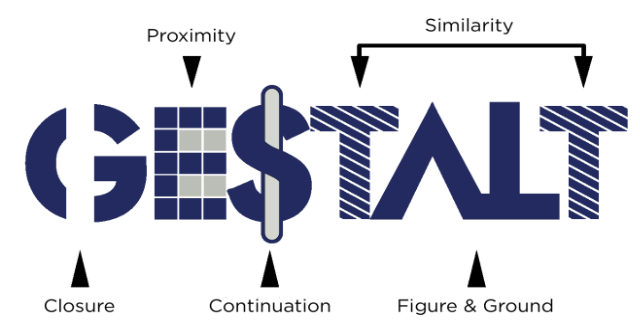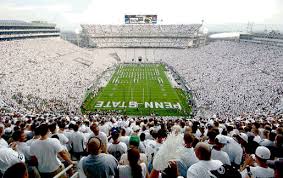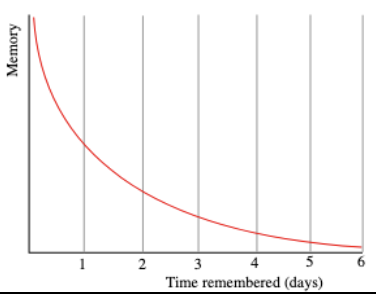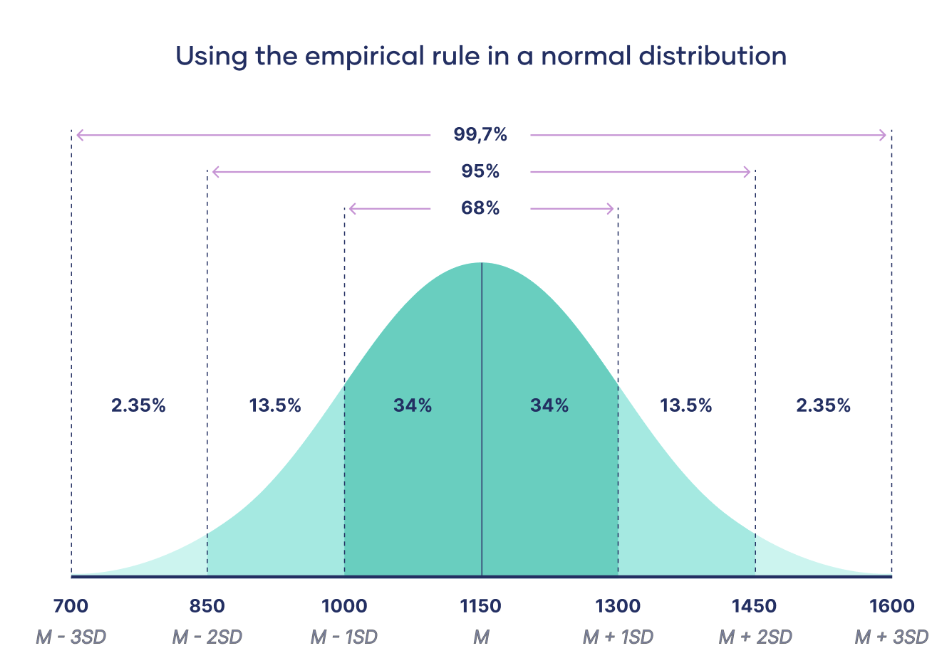AP Psych Unit 2
1/92
Earn XP
Description and Tags
Name | Mastery | Learn | Test | Matching | Spaced |
|---|
No study sessions yet.
93 Terms
Bottom-Up processing
Sensory info from sensory receptors → Integration of into by brain → Perceptions
Start by examining small details & piece them together into larger piece
(e.g. taste burger [sensory info] → good)
Top-Down Processing
Information guided by higher-level mental processes
Experiences & expectations → Perceptions
(E.g. oh i ate this before and it was good [experience] → good)
Schemas
Mental filters/maps that organize info → impact perceptual set
(e.g. Feathers + wings → Birds [schema], see shuttlecock → bird)
Perceptual set
Mental tendencies & assumptions. Tend to perceive/notice some aspects of the available sensory information & ignore others.
Expectations
Context
Motivation
Emotions
Selector: Expectations → focus attention on certain aspects of sensory info (e.g. expect charles to do well → only focuses on his overtakes, ignores his lock up)
Interpreter: Already knows how to classify, understand & label sensory info, and what inferences to draw from it → Perceive sensory info using existing knowledge (e.g. Overtakes, apex = good; lock ups, track limits = bad → charles more good than bad [sensory info + existing knowledge] → charles did well [interpretation])
Perception
Organizing & interpreting sensory info → make sense of meaningful objects & events
Gestalt Psychology
Humans integrate pieces of information into a meaningful whole. Things are more than the sum of its parts.
Form Perception (NOT CED)
Closure: Filling in gaps to see a complete object
Proximity: See nearby objects together as a group (e.g. II II II → see 3 groups of 2 instead of 6)
Similarity: See objects with similar attributes together as a group
Figure and Ground: Differentiate between an object & its background

Attention
State of consciousness where a person can respond to a stimulus/stimuli
Selective Attention
Consciousness focuses on one thing at a time
Cocktail Party Effect: Focusing auditory attention on one stimulus while filtering out others
(e.g. focus on your convo, instead of hearing all the convos around you at party)
Inattentional blindness: X see visible objects when attention is directed elsewhere
(e.g. talking to charles, didn’t see leo running across in front of you)
Change blindness: X notice changes in the environment
(e.g. talking to charles, didn’t see he put his cap on when you bent down to pet leo)
Binocular Cues
Clues that use 2 eyes → see depth (3D, near far)
Convergence: Eyes move inwards to see near objects, oitwards to see far objects → more inwards (convergence) = closer
Relative Disparity: 2 eyes slightly apart → different images from retinas → brain compares images → judges how far object is → More disparity (difference) = closer
Monocular Cues
Clues that use 1 eye → see depth (3D, near far)
Relative clarity: Hazy objects = further (light passes through distant objects more than close objects)
Relative size: Assume 2 objects similar in size → Smaller object = further
Texture gradient: Smoother & denser texture = further, more defined = closer
Linear perspective: Parallel lines seem to meet at the vanishing point. More line convergence (together) → Longer perceived distance
Interposition: Object A blocks Object B = Object A closer

Perceptual constancies
Ability & need to perceive objects as unchanging even though distance, point of view and illumination (retinal image) change.
(e.g. walk around car #16 → different angles, illumination → still know it’s the same car)
Apparent Motion
A sequence of still images looks like it’s moving
(e.g. video games fps)
Concept
Mental grouping of similar objects/events/people/ideas
(e.g. chairs, cats, girls)
Prototype
Mental representation/best example of a concept (group) or object
e.g. Flight attendant → female, high heels, neck scarf, blazer, pencil skirt
Assimilation
Interpret new information (experience/knowledge) in terms of existing schema
(e.g. see water lily → matches flower schema → water lily = flower)
Accommodation
Changing your current schema to incorporate new information
(e.g. Seeing difference between water lily and dandelion, and knowing the difference → flower can grow on water & land)
Algorithm
Step-by-step procedure that guarantees a solution
Slower, less errors
(e.g. dk MCQ answer → try all 4 answers & press check for each one)
Heuristic
Mental shortcuts & strategies to make judgments & solve problems faster
Faster, more errors
(e.g. Option A : “never” , Option B: “always” → 50/50 choose between option C & D)
Representativeness heuristic
Judge likelihood of things in terms of how well they match your prototype
(e.g. Ella A+, good at STEM → more likely to become a scientist → wrong)
Availability heuristic
Judge the likelihood of events in terms of their availability in memory
(e.g. watched plane crash documentary → feel sure plane is going to crash now)
Mental set
Tendency to approach a problem in a certain way, especially a way that was successful in the past
(e.g. Last time addition worked → this time problem try addition first)
Priming
Triggering a thread of associations that bring us to a concept
(e.g. keep seeing number 16 unconsciously → think car #16 will win gp)
Framing
The way an issue is presented → affect decisions & judgments
(e.g. How would you describe this tragedy? → use more exaggerated, negative descriptions)
Nudge
Altering people’s behavior in a predictable way without forbidding any options
(e.g. show number 16 deliberately → person thinks car #16 will win gp) (E.g. Inception plant ideas in the person’s dream → alter real life behavior in a predictable way without forbidding any options)
Gambler’s Fallacy
Failing to recognize the independence of chance events, leading to the mistaken belief that one can predict the outcome of a chance event based on outcomes of past chance events
(e.g. random MCQ answers → lots of A in a row → next one can’t be A)
Sunk-cost Fallacy
Tendency for people to continue an endeavor even when abandoning it would be more beneficial
(e.g. paid for F1TV → use it, even though you don’t want to, because you paid for it. But actually it costs the same if you use it or you don’t)
Confirmation Bias
Tendency to search for information that confirms your preexisting beliefs
(e.g. aliens are real → only read articles about aliens are real)
Fixation
Hung up on 1 perspective, X see problem from a new perspective
Functional fixedness: Inability to find a new use for an object associated with a different purpose
(e.g. bucket for carrying water → X think it could be a step stool to help get high up jar of bolognaise sauce)
(e.g. thinking how to solve problem with addition, didn’t see could do it with subtraction easier)
Intuition
Effortless, immediate, automatic feeling/thought, X explicit, conscious reasoning → faster judgments/decisions
(e.g. what should I eat today..? I feel like a Boogie burger :))
Overconfidence
Overestimate accuracy of beliefs & judgments
(e.g. It must be A, there’s no way I got it wrong)
Belief Perseverance
Holding on to initial beliefs despite contrary evidence
(e.g. Stroll is the best driver! → many crashes, outscored by teammate every year → no he is the best driver)
Executive Functions
Set of neurocognitive skills for goal-directed problem solving
Insight
Aha! moment, sudden realization of solution
(e.g. why is the car so slow?? OH i forgot to warm the tyres!)
Creativity
Ability to produce new & valuable ideas
Expertise, imagination, venturesome personality, intrinsic motivation, creative environment → More creativity
(e.g. shark tank comes up with many new inventions for problems)
Divergent thinking
Expanding number of possible problem solutions, think in new ways → creativity
(e.g. how do i solve this quadratic? → use quadratic formula, factor, graph)

Convergent thinking
Narrows available problem solutions to determine the single best solution
(e.g. what is the answer? Option A, no; option B, no; Option C, no; It’s option D)
Memory
Learning that persists over time. Info that can be acquired, stored & retrieved
Explicit / declarative memory
Memory of facts & experience that you consciously know & “declare”.
Episodic memory: EVENTS. Long term memory of specific events, life stories & experiences, situations that we can recall & tell someone
(e.g. I went to Mcdonalds & saw Logan Sargeant last week)
Autobiographical memory: memories about your own experiences
Semantic memory: FACTS/NAMES/CONCEPTS. Impersonal memories from everyday, common kinds of knowledge. X personal experience
(e.g. There are 26 alphabets)
Flashbulb memory: Emotionally intense events that become a vivid memory
Frontal lobes
Left: e.g. recall password & hold in working memory
Right: remember visual scenes
Hippocampus
Visual design, location, verbal info, social info, spatial memory
Register & temporarily hold, smell, feel, sound, location of episode → memory consolidation with sleep, rehearsal → store in long-term memory
Emotions & transfer of info from STM to LTM
Amygdala: Primary processor of emotional reactions, social & sexual behavior
Implicit / nondeclarative memory
Retention of info X from conscious recollection. Info you remember unconsciously & effortlessly.
(e.g. remembering the words to a popular song after hearing the intro)
Procedural memory: Long-term memory for how to do particular tasks
(e.g. how to tie shoelaces)
Cerebellum: Form & store implicit memories caused by classical conditioning, procedural memory - how to do things
Basal ganglia: memory retrieval & procedural memory - creating & maintaining habits
Prospective memory
Remembering to perform actions in the future
(e.g. Oh i have to go shopping later)
Retrospective memory
Remembering events from the past/previously learned information
(e.g. i went shopping last Friday.)
Long-term potentiation
An increase in a cell’s firing potential after brief, rapid stimulation. Neural basis for learning & memory
Learning → More connections, easier to fire & release neurotransmitters
Neurogenesis
Production of new neurons during early nervous system development & throughout life
Multi-store model
Describes flow between 3 permanent storage systems of memory: Sensory register (SR), short-term memory (STM) & Long-term memory (LTM)
Sensory memory: Processing everything we sense. Immediate, very brief recording of sensory info in memory system
Iconic memory: Momentary, fleeting visual picture of scene
Echoic memory: Auditory signals, few seconds
→ Attention to important info, encoding →
Short-term memory: Activated memory that holds a few items briefly (7 ± 2 items), before info is stored/forgotten
[Working memory model:
Working memory: Conscious, active processing of incoming auditory & visual-spatial info, & of info retrieved from long-term memory. Make sense of new input, link old memories, process stored info
Central executive: Manages activities of phonological loop & visuospatial sketchpad
Phonological loop: Manipulates auditory info over short intervals of time. Mentally repeating to yourself
Visuospatial sketchpad: Brief storage of visual info, create & manipulate mental images. Mentally picturing sth]
→ rehearsal →
Long-term memory: Relatively permanent & limitless storage. Includes knowledge, skills, experiences
Go back from long term → retrieval → working/short term to get info out
![<p>Describes flow between 3 permanent storage systems of memory: Sensory register (SR), short-term memory (STM) & Long-term memory (LTM)</p><ul><li><p><strong>Sensory memory</strong>: Processing <u>everything</u> we sense. Immediate, very brief recording of sensory info in memory system</p><ul><li><p><strong>Iconic memory</strong>: Momentary, fleeting visual picture of scene</p></li><li><p><strong>Echoic memory:</strong> Auditory signals, few seconds</p></li></ul><p>→ Attention to important info, encoding →</p></li></ul><ul><li><p><strong>Short-term memory:</strong> Activated memory that holds a few items briefly (7 ± 2 items), before info is stored/forgotten</p><ul><li><p>[Working memory model:</p><ul><li><p><strong>Working memory:</strong> Conscious, active processing of incoming auditory & visual-spatial info, & of info retrieved from long-term memory. Make sense of new input, link old memories, process stored info</p><ul><li><p><strong>Central executive: </strong>Manages activities of phonological loop & visuospatial sketchpad</p></li><li><p><strong>Phonological loop: </strong>Manipulates auditory info over short intervals of time. Mentally repeating to yourself</p></li><li><p><strong>Visuospatial sketchpad:</strong> Brief storage of visual info, create & manipulate mental images. Mentally picturing sth]</p></li></ul></li></ul><p>→ rehearsal →</p></li></ul></li><li><p><strong>Long-term memory:</strong> Relatively permanent & limitless storage. Includes knowledge, skills, experiences</p></li></ul><p>Go back from long term → retrieval → working/short term to get info out</p><p></p>](https://knowt-user-attachments.s3.amazonaws.com/2d9e1d8d-1e2b-4d14-b1fc-8e5a85215285.webp)
Levels of Processing Model (NOT CED)
Autonomic Processing: Unconscious encoding of incidental info (e.g. space, time, frequency) and well-learned info (e.g. word meanings) → implicit memories
Effortful Processing: Encoding needs attention & conscious effort → Explicit memories
Deep Processing: Elaborate rehearsal, put meaning on words & ideas being learned (e.g. softs = degrade faster, go fastest; mediums = degrade medium, go medium speed; hards = degrade slowest, go slowest)
Semantic Processing: Store & access meaning of words & their changes
Shallow Processing: Simple memorization without putting meaning to it (e.g. softs, mediums, hards)
Structural Processing: Remember only physical quality of the word (e.g. softs - 5 letters)
Phonemic Processing: Remember sound of word (eg. softs - sssoffs)
Information-processing Model
Encoding: Getting info in (prep for storage) →
Storage: Keep info over time (rehearsal)
Retrieval: Get info back (recall)
(later cards go into detail for each)
Encoding
Conversion of sensory input into a form capable of being processed & deposited in memory
Encoding strategies
Mnemonic Devices: Memory aids, usually techniques with vivid imagery & organizational devices
Method of loci: Memory palace. Visualize familiar place & associate things that need to be memorized with things in that place, walk through mentally → enhance memory & recall (e.g. way to school: front door - apples, steps - yogurt)
Peg word system: Memorize lists in order. Associate things that need to be memorized with visualized objects/images that “pegs” the info → easier to recall & remember (e.g. one is a bun - apples, two is a shoe - yogurt)
Grouping
Chunking: Combining bits of related info
Categories: the way we sort objects into groups that help us organize knowledge
(e.g. apples & yogurt - parfait)
Hierarchies: System where concepts are ranked one above another based on specific criteria (e.g. flowcharts)
Distributed Practice: Practice periods for a particular task are separated by lengthy rest periods/doing other stuff
Massed practice: Practice trials occur close together in time, in 1 single lengthy session/ in sessions separated by short intervals
Spacing Effect: Distributed practice → better long-term retention than massed practice
Serial position effect: When learning a list, more likely the recall first items (primacy effect, cuz u seen it more times going thru list) & last items (recency effect, cuz u just learned it)
Maintenance Rehearsal
[storage] Repeating items over & over to maintain them in short-term memory
Elaborative rehearsal
[storage] Linking new info with existing memories & knowledge
Retrograde Amnesia
[storage] Inability to remember previously stored memories
Anterograde Amnesia
[storage] Inability to form new memories
Alzheimer’s Disease
[storage] Brain disorder that gets worse over time, brains shrinks & brain cells eventually die
Infantile Amnesia
[storage] Inability to recall events from early childhood
Retrieval
Act of getting info out of memory storage & back in conscious awareness
Recall: direct retrieval of facts/info (e.g. FRQ)
Recognition: Correct identification of previously learned material (e.g. MCQ)
Retrieval cues: Stimuli related to info trying to get out of memory → help in retrieval
Relearning
[retrieval] Measure of memory that assesses the amount of time saved when learning material again. Learn more & more times → recall faster, take shorter time to learn
Context-dependent memory
[retrieval] Easier to retrieve memory when context/circumstances match original context/circumstances memories were encoded
(e.g. learned in classroom → easier to remember in classroom)
Mood-congruent memory
[retrieval] Easier to retrieve memory in mood similar to when memory was encoded
(e.g. sad now → remember last time sad when mcflurry machine was broken)
State-dependent memory
[retrieval] Easier to retrieve memory if physical/mental state is similar to when memory was encoded
(e.g. drunk now → remember last time drunk at night club with Fernando)
Testing Effect
[retrieval] Enhanced memory after retrieving info. Better than just rereading
(e.g. use quizzes to study, instead of looking over notes → better recall in test)
Meta cognition
Thinking about your own thinking
Forgetting curve
Shows amount of forgetting over time after learning has taken place. Rapid decline of info → plateaus out
Hermann Ebbinghaus: German psychologist in experimental study of memory, discovered forgetting curve & spacing effect

Encoding failure
[forgetting] X pay attention → memory X formed in the first place
Proactive interference
[forgetting] P.O.R.N. Old info affect new info
(e.g. only remember old password, not new password)
Retroactive interference
[forgetting] P.O.R.N. New info affect old info
(e.g. only remember new password, not old password)
Tip-of-the-tongue phenomenon
[forgetting] Info is retained in memory store, but X access. Retrieval failure
You know you know it, but you just can’t think of it
Ego
Conscious, executive part of personality that mediates the id, superego & reality
Repression
Banishing anxiety arousing thoughts, feelings, memories into unconscious
Misinformation effect
Incorporating misleading info into your memory of an event
(e.g. ohh did you see the new licorice mcflurry? (It’s fake) You feel like you got licorice mcflurry last time at mcdonalds)
Source amnesia
Forget where, how & when info was learned/imagined
(e.g. New licorice mcflurry! you thought you saw it on an MTR ad, but actually Franco told you)
Constructive memory
Using general knowledge stored in memory to construct/ fill in gaps for a more complete/detailed account of an event
(e.g. you remember you went to the park, but you forgot when → Probably was in the afternoon, thats when you usually go → afternoon becomes part of that memory)
Memory consolidation
Neurobiological processes where a permanent memory is formed from a learning experience
(e.g. learn about memory multiple times in AP Psych → always remember multi-store model)
Imagination inflation
If you imagine an event → more likely to think it actually happened
(e.g. can you imagine a time you went to Disney World Florida? Imagine → think you actually went in childhood)
Intelligence
Ability to learn from experience, recognize problems, use knowledge to adapt to new situations & solve problems
General intelligence (g)
Underlies all mental abilities → measured in every task in an intelligence test
Fluid intelligence
Recognizing patterns, seeing relationships, using logic to solve new problems
Ability to reason quickly & abstractly, X prior knowledge, decreases with age
Crystallized intelligence
Accumulated knowledge & verbal skills, increases with age
Multiple intelligences
Different ways that students learn & acquire info, ranging from the use of words, numbers, pictures & music; to the importance of social interactions, introspection, physical movement & being in tune with nature
Naturalist
Linguistic
Interpersonal
Logical/ mathematical
Musical
Intrapersonal
Bodily-kinesthetic
Spatial
Existential
Stanford-Binet
Standardized test to measure cognitive abilities & intelligence
Intelligence quotient (IQ)
Mental age (provided by exam) / chronological age (actual age) x 100
Mental age: Age level which you function at mentally
Psychometrics
Branch of psychology concerned with quantifying & measuring mental attributes, behavior, performance. Also designs, analyzes & improves tests, questionaires & other instruments used in meausring those things
Standardization
Uniform testing procedures & meaningful scores by comparison with the performance of a pretested group (similar to control)
(e.g. SAT)
Normal curve
Symmetrical, bell-shaped curve. Describes distribution of many physical and psychological attributes. Most scores fall near the average, and fewer and fewer scores lie near the extremes.
Memorize percentages

Valid
Accuracy. Measures/ predicts what it is supposed to measure/predict
Construct validity: Measures what is is intended to. Whether a test is really evaluating an abstract psychological or theoretical idea
(e.g. SAT for creativity → low construct validity)
Predictive validity: How well test results relate to another measure of what you are evaluating. / anticipates future results
(e.g. SAT scores correlate with college acceptance → high predictive validity of future college acceptance rate)
Reliable
Test gives consistent results
Test-retest reliability: Person takes same test at 2 different times → similar result → reliable
Split-half reliability: Split test into 2 halves → similar results → reliable
Stereotype Threat
Person’s expectation about negative stereotypes about their group → do worse
(e.g. white proctor for black person test → scared look down on black → do worse unconsciously)
Stereotype lift
X negative stereotype → do better
(e.g. white proctor for asians test → Asians smarter stereotype → do better unconsciously)
Flynn effect
People are getting smarter (increasing IQ scores) / getting better at taking standardized tests
Achievement Test
Test to assess your learning
(e.g. AP Psych Unit 2 test)
Aptitude test
Test to predict your future performance
(e.g. high conscientiousness → Predicts better work ethic & hiring)
Fixed mindset
Thinks that brain & intelligence X change
Growth mindset
Thinks abilities & intelligence can be developed through effort, learning & perseverance
Triarchic theory of intelligence
Creative, practical, analytical